#KATRINA10 – Connecting Communities Through Humble Leadership: A Reflection from Bishop Gray
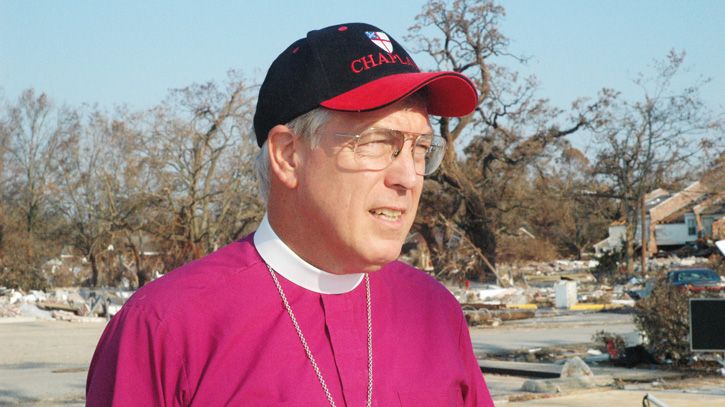
#KATRINA10 BLOG SERIES ___________________________________________________________
It has been nearly a decade since Hurricane Katrina devastated many states along the gulf coast, leaving over 1,800 dead and tens of thousands displaced. Through the #KATRINA10 Blog Series we will be sharing stories over the next few weeks to commemorate the anniversary of the event and celebrate the progress made to rebuild communities.
We conclude our series with a story from Bishop Duncan M. Gray III.
___________________________________________________________________________________
When Hurricane Katrina hit Mississippi, we had some preparations in place, but Katrina overwhelmed them all. Both the folks we saw every day in our congregation and those who were not in our natural orbit were in need of help, but it was hard to know where to begin.
The first thing I did after the hurricane was reach out to my father [Bishop Duncan Gray, Jr.], who was a priest during Hurricane Camille. He said our response should first focus on the clergy, to allow them to be anchors for the congregations and, in turn, the congregations to be anchors within the communities. The idea was to infuse natural communities of mission with as much support as possible and make them concentric circles of long-lasting infrastructure for ministry. It just took putting on lenses of faith, to say ‘somewhere within this, there are the resources we need.’
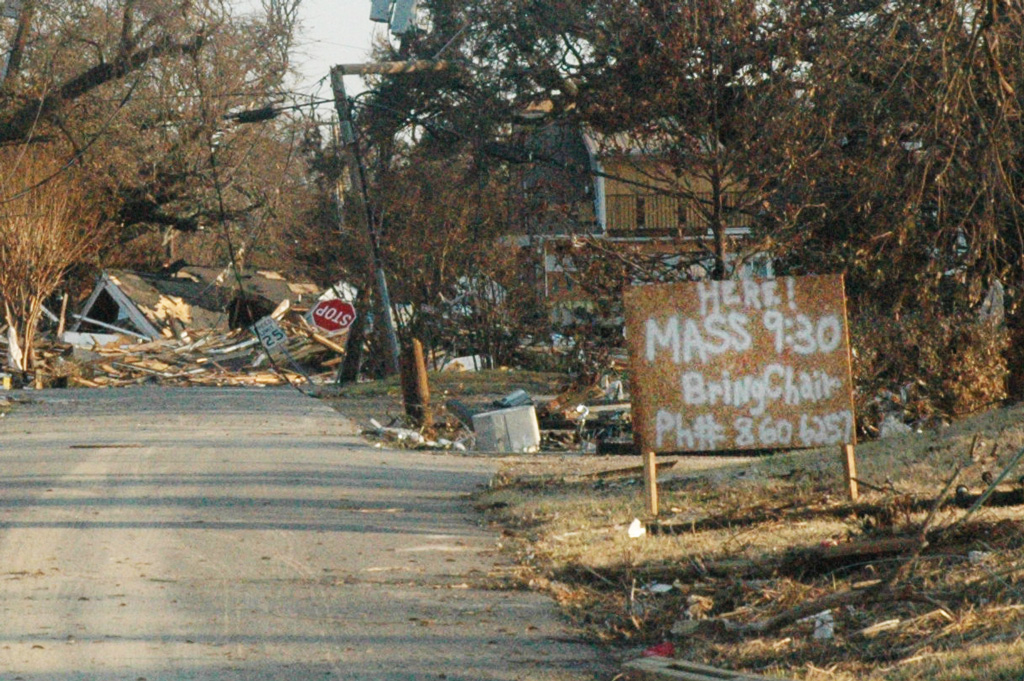
It wasn’t always evident how we would get to the next step, so flexibility and openness were key. People like Carol Borne Spencer were natural connectors, bringing us into relationship with organizations like Episcopal Relief & Development, HOPE Credit Union and envisioning programs like Hallelujah Housing and Camp Coast Care – which then provided links to the wider community, to people who were advocates for the lost, the invisible. This was extraordinarily important.
Disasters highlight existing problems, and in this case, Katrina highlighted the fact that renters were far more vulnerable than homeowners in terms of access to funds for recovery. I learned how low-income Mississippians could be displaced by the post-storm reconstruction – for example, the rebuilding of the port would be a great economic engine, but without affordable housing in the area, there would be no place to live nearby for the people who worked there. Creative thinking, spurred by our partners, helped us maximize our limited funds for relief. Rather than providing direct grants, as important as they are, we leveraged funding from Episcopal Relief & Development to help Hallelujah Housing guarantee mortgages for 300 families who wouldn’t have been able to qualify otherwise. Everything about this was eye-opening for me.
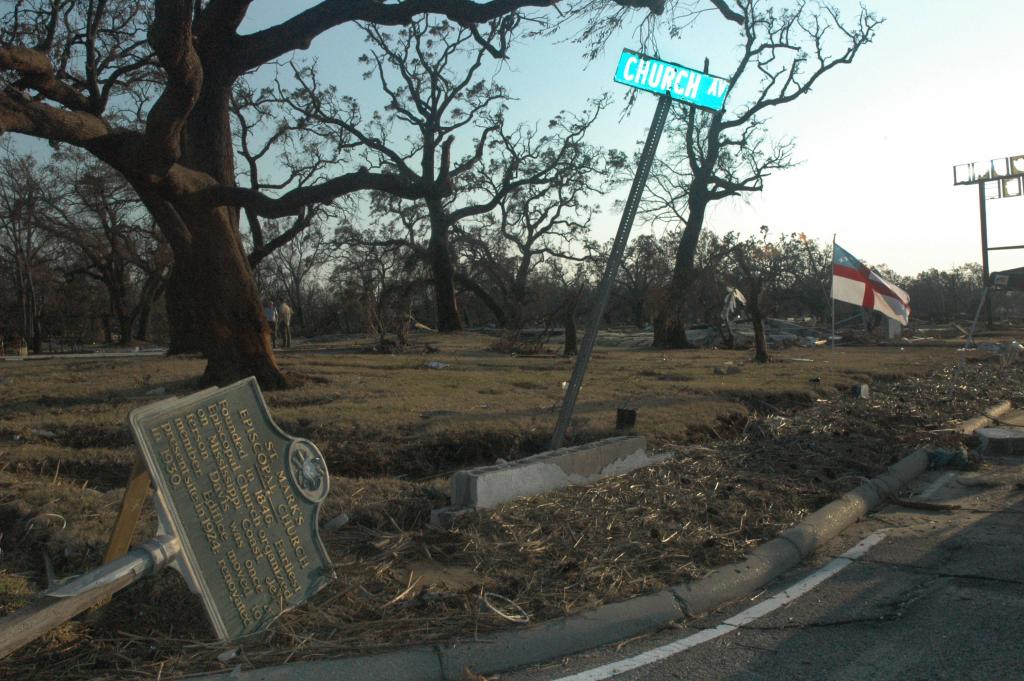
Life is back to normal in Mississippi, but it’s a new normal. When the hurricane first hit, it broke down barriers between people. Those who were previously able to protect themselves from vulnerability – and from seeing vulnerability – suddenly found themselves in the same position as the people they shied away from. It was a window in which we glimpsed each other a little differently. Of course, as people began to rebuild, some of the same efforts at protection (emotionally, psychologically, physically) began to develop, but time will tell. When you’ve been in the ditch with folks you wouldn’t normally go to church with, people can’t be ignored quite as easily.
Although there were blind spots early on, approaching our Katrina response with humility and openness enabled us to reach those who wouldn’t have been on our radar otherwise. We learned how to leverage our resources and relationships to go find those communities and institutions that knew the individuals we were missing in our best efforts. My dream was that the storm response would eternally spring the Kingdom of God in the Mississippi gulf coast. It didn’t. But I do know everything didn’t go back to the way it was. We’ve learned to see each other a little differently, and we’ve learned that with faith and creativity, what gifts we have can be enough to overcome any challenge.
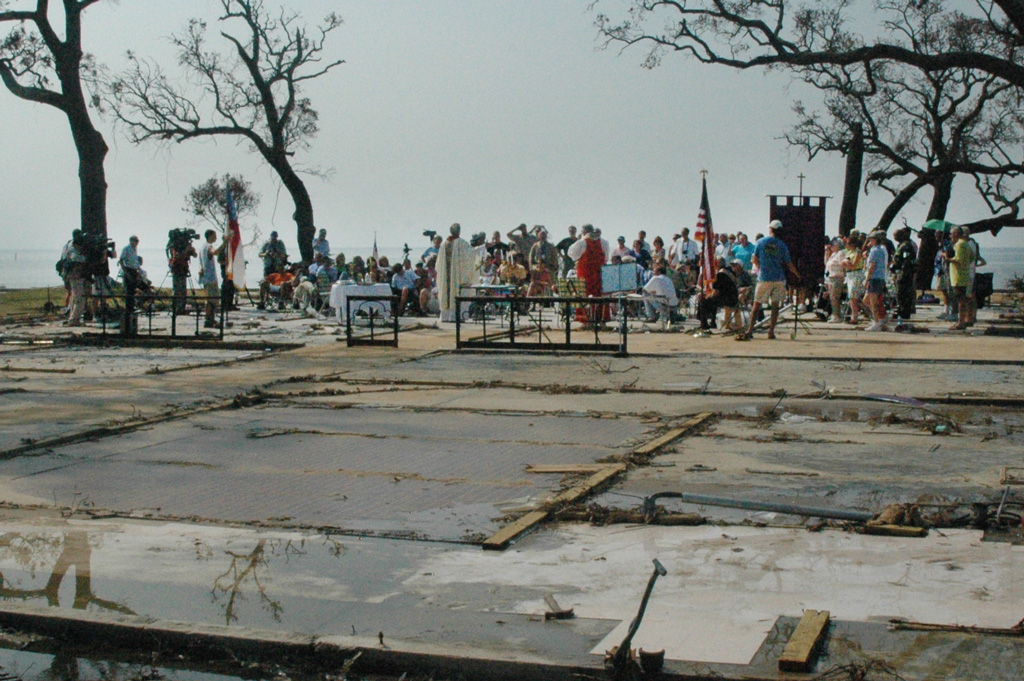
—————
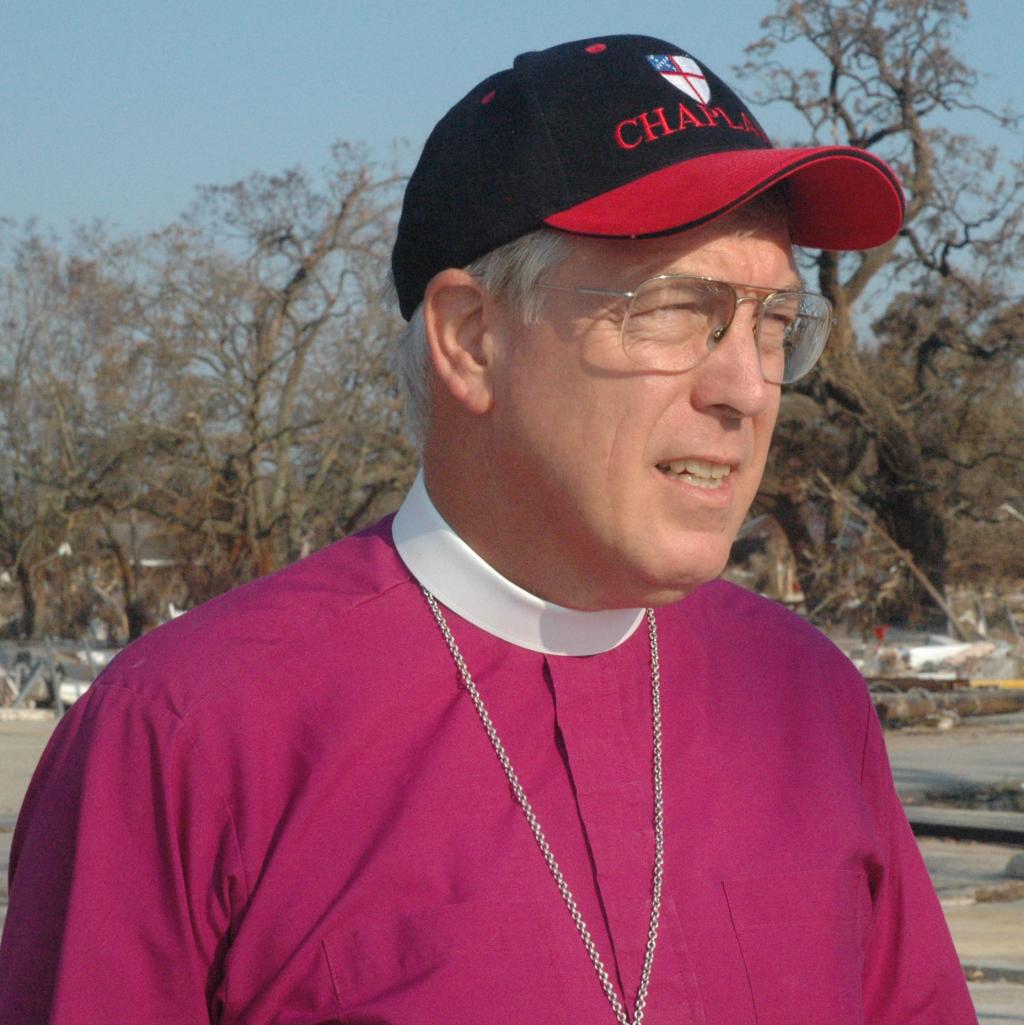
Bishop Duncan M. Gray III is the retired Ninth Bishop of Mississippi, currently residing in New Orleans.
Images: Top, Sign for St Marks Service. On Church Avenue in Gulfport, Mississippi, a makeshift sign announces a service on the site where St. Mark’s Church once stood before it was devastated by Hurricane Katrina. (Credit, ENS) Middle, St. Marks Sign, Gulfport MS. Along the coast at Gulfport, Mississippi, where the eye of Hurricane Katrina made landfall August 29, a sign for St. Mark’s Episcopal Church lies on the roadside near where the church once rested. (Matt Davies, ENS) Bottom, The congregation of St. Marks Church. The congregation of St. Mark’s Church, Gulfport, gather on the slab upon which the church once stood September 4 to celebrate Eucharist with their rector, the Very Rev. James Bo Roberts, and Bishop Duncan Gray III of Mississippi.
Healing the world starts with your story!
During the 75th Anniversary Celebration, we are sharing 75 stories over 75 weeks – illustrating how lives are transformed through the shared abundance of our partners and friends like you! We invite you to join us in inspiring our vibrant community by sharing your own story!



